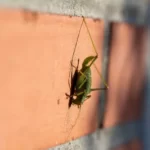As a responsible dog owner, ensuring the safety and well-being of your furry companion is of paramount importance. This duty extends to being aware of potential hazards in your dog’s environment, including the plants in your garden or landscape. One such plant that often graces gardens with its vibrant, ground-covering presence is Creeping Jenny (Lysimachia nummularia). However, the question that concerns many dog owners is whether Creeping Jenny is toxic to dogs. In this article, we delve into the world of Creeping Jenny, exploring its characteristics, popularity in landscaping, and most importantly, whether it poses any threats to our canine friends. By understanding the nature of this plant, you can make informed decisions regarding your dog’s safety in the garden.
Creeping Jenny
To comprehend the potential risks or lack thereof associated with Creeping Jenny, it is essential to get to know this plant. Creeping Jenny, also known by its botanical name Lysimachia nummularia, is a low-growing, herbaceous perennial. It is recognized for its distinctive trailing or creeping stems and its charming, bright yellow to chartreuse leaves.
This plant’s adaptability and versatility have made it a beloved addition to gardens and landscapes. Gardeners appreciate it for its use as a ground cover, where it gracefully blankets the soil, suppressing weeds and adding vibrant color. Creeping Jenny also shines in hanging baskets and as a border plant. Its name, “Creeping Jenny,” is a testament to its creeping, spreading habit.
Understanding the characteristics and common uses of Creeping Jenny is the first step in assessing any potential risks it might pose to dogs. It’s also important to recognize that Creeping Jenny belongs to the Lysimachia genus, which contains various species and subspecies, so understanding the specific plant in your garden is crucial for safety considerations.
Toxicity Concerns and Symptoms
The question of whether Creeping Jenny is toxic to dogs hinges on the presence of potentially harmful compounds within the plant. While Creeping Jenny is not typically considered highly toxic to dogs, some concerns do exist. It’s essential to be aware of these concerns and recognize potential symptoms of plant toxicity in dogs.
Common symptoms of plant toxicity in dogs can include gastrointestinal upset, such as drooling, vomiting, or diarrhea. However, the severity of these symptoms can vary based on factors like the dog’s size, the quantity of plant material ingested, and the specific compounds present in the plant. While mild symptoms might resolve on their own, severe cases could lead to more significant health issues.
If you suspect your dog has ingested Creeping Jenny or any plant and begins exhibiting unusual behavior or symptoms, it’s crucial to seek prompt veterinary care. Early intervention can be critical in preventing the escalation of symptoms and ensuring your dog’s well-being.
Research and Expert Opinions
When it comes to the potential toxicity of Creeping Jenny to dogs, it’s vital to consider existing research and expert opinions. To date, there isn’t an abundance of scientific research specifically addressing the toxicity of Creeping Jenny to dogs.
This limited research may be due to the fact that Creeping Jenny is not typically regarded as highly toxic. While this lack of data can be reassuring, it’s important to remember that anecdotal reports and personal experiences of dog owners should not be dismissed. Many pet owners have not reported issues related to their dogs and Creeping Jenny, but individual responses can vary.
To gain a comprehensive understanding of any potential risks associated with Creeping Jenny, it’s advisable to consult with experts in veterinary medicine or plant toxicology. Veterinarians and toxicologists can provide insights into the safety of plants in your pet’s environment and offer guidance on preventing plant-related issues. Ultimately, the welfare of your dog should remain a top priority, and staying informed about potential hazards in your surroundings is part of responsible pet ownership.
Personal Accounts and Anecdotes
Personal experiences and anecdotes from dog owners can offer valuable insights into the potential risks or safety of Creeping Jenny for dogs. While anecdotes are not a substitute for scientific research, they can shed light on real-world encounters with this plant.
Many dog owners have reported that their pets have interacted with Creeping Jenny without any apparent issues. These anecdotes often revolve around dogs exploring gardens and occasionally nibbling on plants, including Creeping Jenny, without displaying adverse reactions. Such accounts can provide some reassurance regarding the plant’s safety for dogs.
However, it’s important to remember that individual dogs may react differently to plants, and anecdotal evidence does not replace the need for vigilance and proper safety measures.
Safety Precautions
To ensure your dog’s safety in an environment that may include plants like Creeping Jenny, it’s essential to take safety precautions. Some recommendations for responsible pet ownership include:
- Garden Design: Create safe outdoor spaces for your dog by considering their needs and potential hazards. Design your garden with paths and play areas to minimize their access to plants.
- Plant Selection: Choose plants that are known to be safe for dogs. Consult with experts in horticulture or veterinary medicine to identify dog-friendly plants for your landscape.
- Supervision: Always supervise your dog when they are in the garden, especially if they are known to explore or chew on plants. Training can help prevent unwanted behaviors.
- Consult a Veterinarian: If you suspect that your dog has ingested any plant, including Creeping Jenny, contact your veterinarian for guidance and advice. Early intervention is crucial.
- Monitor Behavior: Be vigilant in observing your dog’s behavior. If they display any unusual symptoms or discomfort after being in the garden, consult a veterinarian promptly.
Conclusion
In conclusion, the question of whether Creeping Jenny is toxic to dogs is nuanced. While Creeping Jenny is not typically considered highly toxic, it’s important to stay informed and exercise responsible pet ownership.
Understanding the characteristics of Creeping Jenny, recognizing potential symptoms of plant toxicity, and being aware of limited scientific research are all part of being a vigilant dog owner. Personal anecdotes can provide some insights, but they should not replace professional veterinary advice or sound safety practices.
Ultimately, ensuring your dog’s well-being in the garden or any environment requires a combination of knowledge, responsible planning, and regular monitoring. By taking these steps, you can create a safe and enjoyable space for both you and your beloved canine companion.



